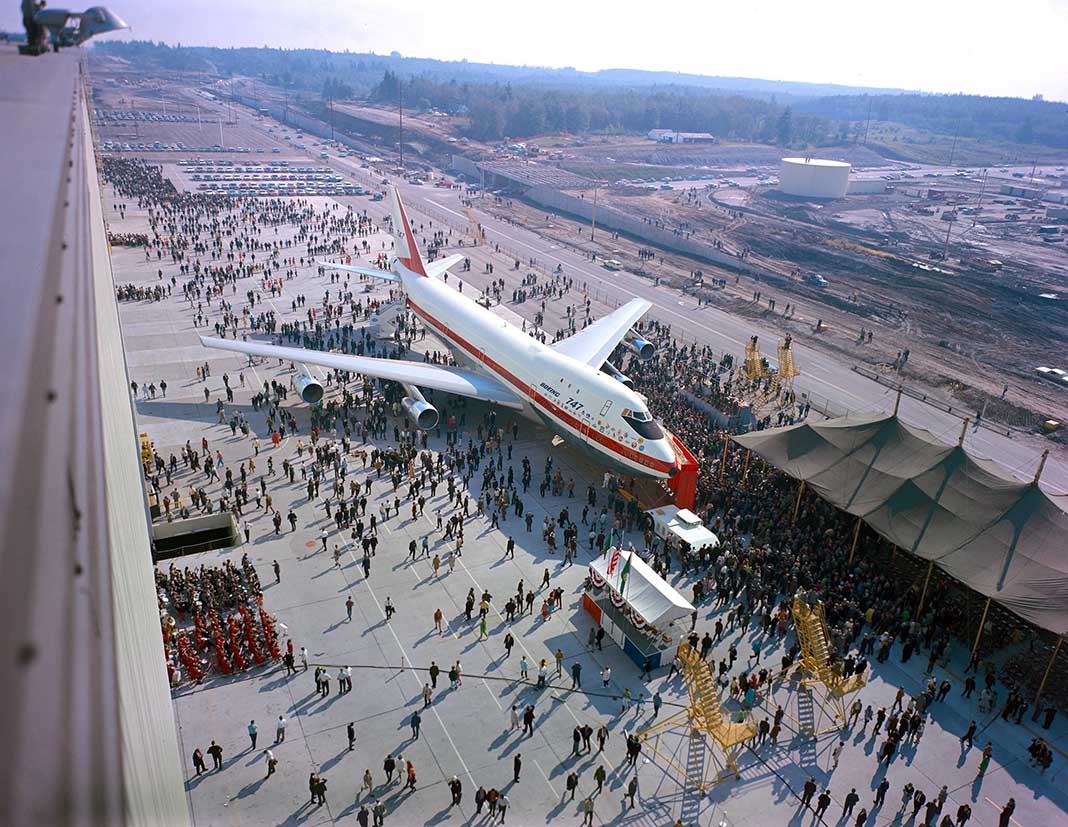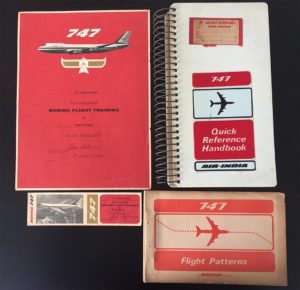September 30th marked the 50th anniversary of the launch of the iconic Boeing 747 airplane, popularly known as the “Jumbo Jet”. On that day in 1968, the prototype of the Boeing 747 airplane, serial number RA001 and named “City of Everett” was unveiled to the public at the Boeing Factory in Everett, Washington, United States.

The debut of the Boeing 747 passenger jet was a quantum leap in science and human air travel – it was the world’s first twin-aisle wide-body airliner, and was more than double the size of the then largest civil airplane, the Boeing 707. It was so large, that the 747’s fuselage was long enough to accommodate the entire distance of man’s first powered flight, performed by the Wright Brothers, in 1903.
By 1967, Air India had already ordered the 747. At the unveiling on September 30th 1968, flight attendants (then known as “air hostesses”) from all the airlines that had ordered the jet, were present. This included an Air India representative dressed in a sari (the then Air India uniform for flight attendants on the Boeing 707).
This was the first time that the then (and now legendary) Air India logo, the Centaur, was applied to the massive 747, along with the insignia of all the other airlines that had ordered the aircraft. The Centaur logo was clearly seen on the airplane, third from left, next to the words “Boeing 747”.

Air India received their first 747 Jumbo Jet a little over 2 years later, in April 1971. By then, the Indian Air Force has deputized, or transferred some of its best aviators and mostly decorated war veterans over to Air India, to fly the soon-to-be arriving Jumbo Jet. My late father, Capt. D.M. Chakraverty, was one of these first Indians to fly the Boeing 747, for Air India. Several Bandra residents, men and women, have also been fortunate enough to have served aboard Air India’s iconic Jumbo Jets, as flight crew and cabin crew. You can still find some of these fine folk, like the Alan Watts, on evenings at the Bandstand promenade, often reminiscing about old times and their years aboard the Jumbo. Sadly, Air India’s first Boeing 747, the “Emperor Ashoka” crashed into the sea off the coast of Bandra, about 2 miles off Bandstand on the night if January 1st, 1978, claiming 213 lives (the tragedy to which, a memorial has not been erected yet, despite my best efforts – but that is another story).
Debasish Chakraverty























